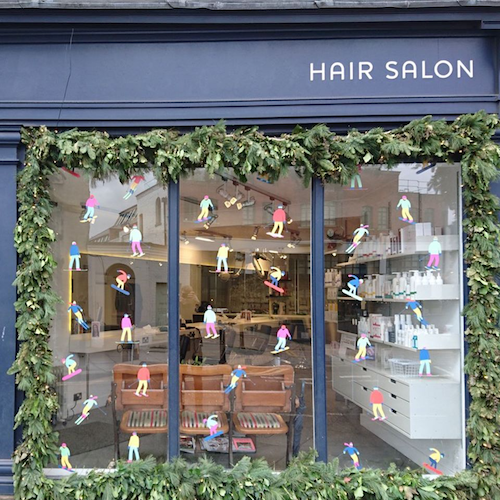Kieran Blacknall, Operations Manager at Drytac, says there are two main ways of placing window graphics: first surface and second surface. In essence, this is choosing whether to apply the graphics on the side of the window facing indoors or the side that faces outwards.
So, which one is which? First surface installations see the graphics applied on the outside of the window, with the adhesive on the back of the piece. As for second surface, the graphics are applied inside but face outwards, with the adhesive on the front of the application. Each brings with it advantages and disadvantages, all of which should be considered before installation.
First Surface
Starting with first surface projects, these graphics often offer a greater visual impact as they are not behind glass. This means they do not face issues such as glare from sunlight that can make some window graphics placed behind glass harder to see and the text trickier to read.
However, with first surface applications come issues that will not impact second surface. The most obvious problem is exposure to weather; graphics installed on the outside of windows will be constantly subject to the elements and face possible damage. Consideration should also be applied to zoning sign allowances, which varies from location to location and can cause headaches.
Second Surface
Turning to second surface projects, unlike first surface pieces, they are protected behind the glass, meaning they can be displayed all year round without installers having to worry about damage from the weather. There is also the additional benefit of compliance with zoning rules; graphics installed inside stores are exempt from zoning allowances, allowing shops to maximise their window presence without falling foul of regulations.
The downside, as you may have predicted, is installing graphics behind the glass, meaning they may not look quite as clear as those placed on the outside of windows.
Advancements in materials and techniques have made it easier to overcome these challenges. For example, printing the artwork mirrored on a clear film, such as SpotOn Clear, Polar Premium Clear, or ReTac Clear PET, allows the graphic to be viewed clearly from outside the building. Pairing this with an opaque product enhances image clarity, minimises transparency and enables the creation of double-sided window graphics. These solutions are ideal for applications such as push-pull signage, offering an effective option for bidirectional advertising campaigns.
Ultimately, it is up to the print service provider and installer to judge which approach is best. Speak with your customers to see what they want to achieve from the installation, consider the type of environment in which the graphics will be placed, and this will help you to establish the most suitable option for each application.
MIDCOMP
+27 10 020 9999
consumables@midcomp.co.za
www.midcomp.co.za















